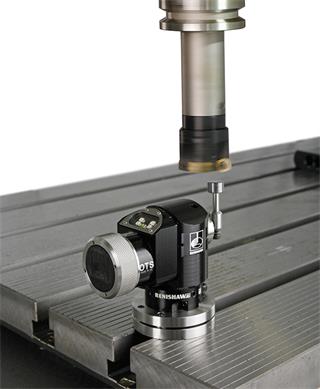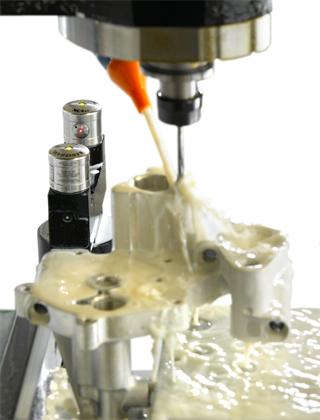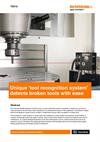Tool setting technology
Determine geometric information and the current condition of a cutting tool.
Tool setting technology
Tool setting is the process of determining geometric information – such as the length, radius, and/or diameter of a cutting tool – using a tool setting device and dedicated software. Some tool setting technologies are also capable of determining information such as radial/linear profile and cutting edge condition. Broken tool detection can be performed by tool setting systems and dedicated broken tool detection devices. Both tool setting and broken tool detection enable unmanned operation of machine tools.
Tool setting products are referred to as 'contact' or 'non-contact', depending on the technology they employ.
Contact tool setters
Contact tool setting systems require physical contact between the device and the loaded tool. Systems can be further classified as 'plunger' style, 'probe' style or as tool setting arms (used for turning centres).
Advantages
- Repeatability and tool-to-tool accuracy
- Robust in harsh machine environments
- Cost-effective
- Can measure in different spindle orientations
- Available with optical transmission
- Can measure the diameter of rotating tools as well as the length
Considerations
- Can deflect very small tools
- No complex edge checking
- Usually mounted on the table
Non-contact tool setters
Non-contact tool setting systems employ an optical (laser) beam to detect tool presence. Systems can be sub-divided into 'fixed' systems (transmitter and receiver units housed within a single assembly), or 'separate' systems having individual transmitter and receiver assemblies.
Non-contact systems can also check for breaks and/or chips on a tool's cutting edge.
Advantages
- Do not deflect very small tools
- Measure at high spindle speeds
- Have permanently protected optics
- Their edge checking detects chipped flutes and inserts
- Multiple measuring points are possible
Considerations
- Generally more expensive than contact systems
- Installation is more complex: clean air supply is required
- Harsh environments and debris can cause application problems and measurement errors with all optical sensors
- Not suitable for fixed tooling
ToolWise™ tool recognition system (broken tool detection)
Broken tool detection is the process used to determine tool condition information, such as radial and linear profile, and cutting edge condition. It is available as a function of most tool setting devices, as well as via dedicated tool detection systems.
Capabilities
- Ultra quick detection times using unique ToolWise™ pattern recognition capabilities
- Flexible system capable of operating over a wide range of tool rotation speeds (200 rpm to 5000 rpm)
- Simple set-up, mounted outside the working envelope of the machine
For more information on tool setting technology, see the Further reading section.









